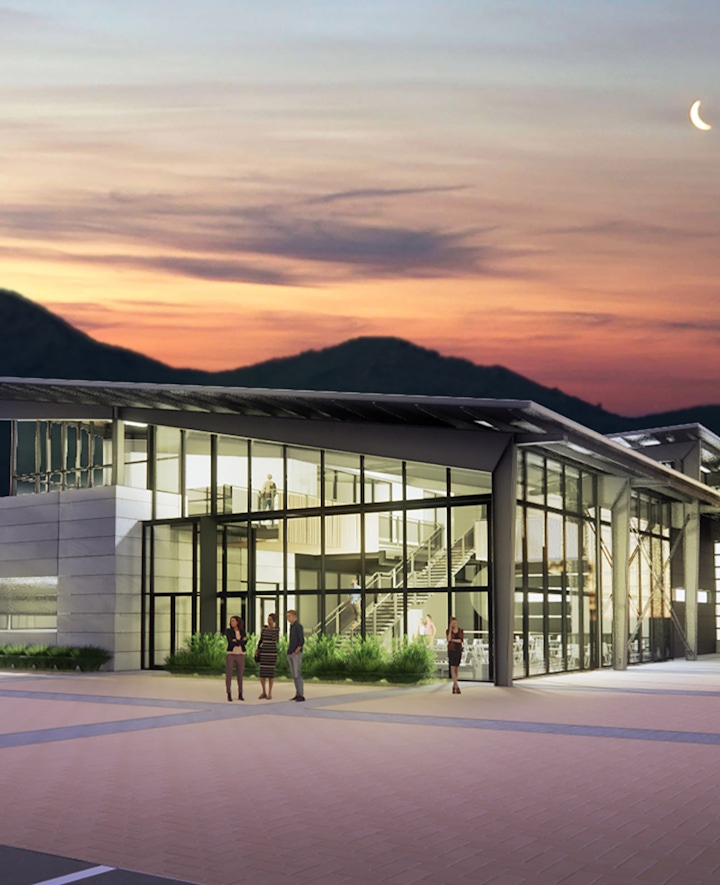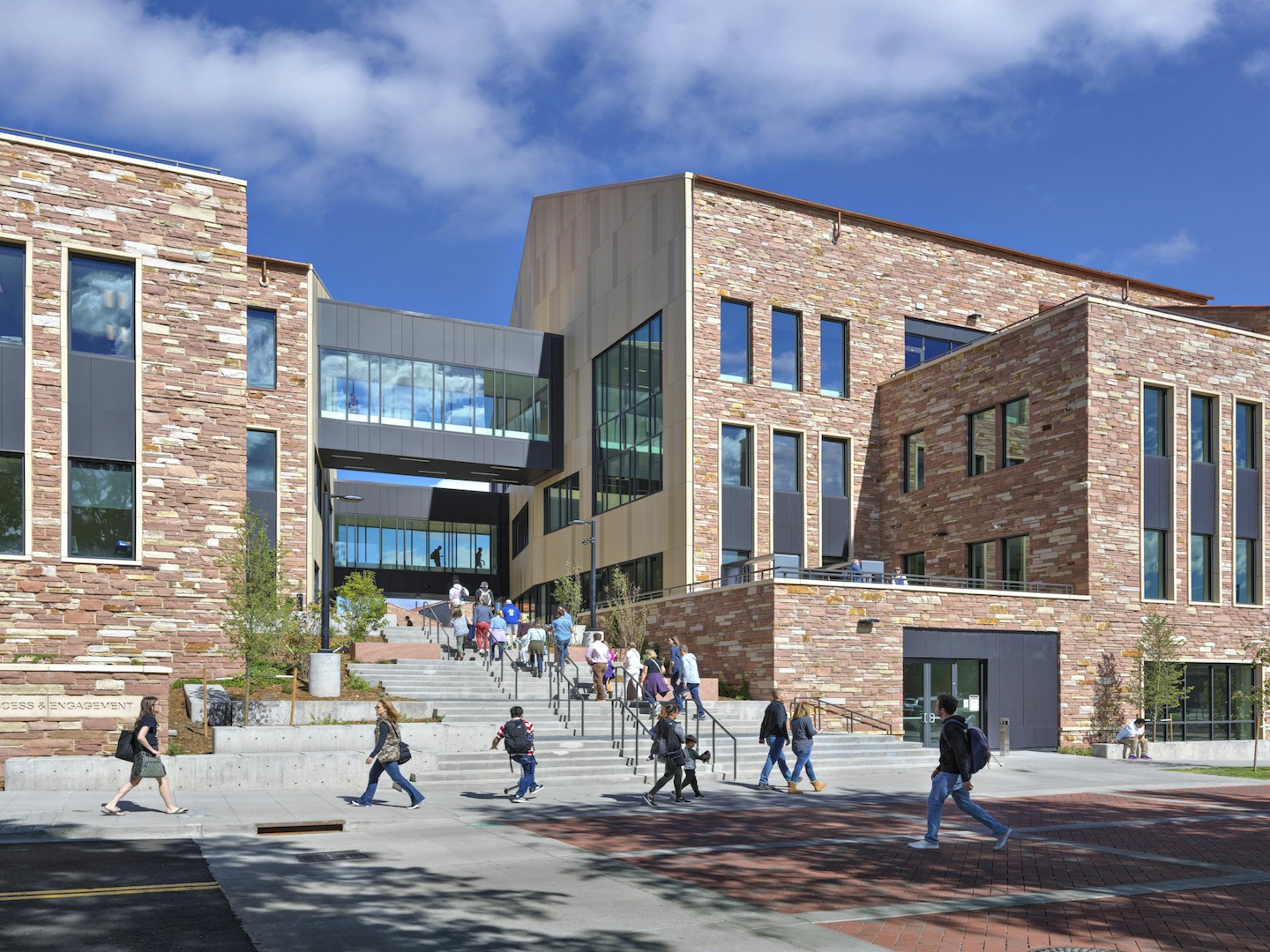Name: David Schafer
Practice Area: Education, Sustainability
Years at OZ: 31
What sparked your interest in architecture?
My uncle was a carpenter in Tucson, and I remember him pointing out his projects as we drove around town. I always admired him for his ability to shape his community, which I found I could do through architecture and design.
Tell us about your career journey and what led you to specializing in your practice area.
I worked at a few places before coming to OZ, and once I joined, I quickly saw the value in such a diverse, open-source firm. The firm has evolved considerably over the 31 years I’ve been here, with a diversity in work that has given me unparalleled experience — something you’d typically only find in working for a collection of firms. At OZ, we have it all under one roof, which has had many advantages.
Early in my time at OZ, I was fortunate to have the opportunity to work in a variety of Practice Areas, ranging from spec office buildings and multifamily housing to labs and resorts, but there were a few factors in my career that drew me into the Education Practice Area that I currently lead.
My parents both worked at the University of Arizona, and as a result, I spent a lot of time on that campus growing up. From a young age, I was intrigued by the way the campus buildings worked together to create spaces, and by the varied experiences that can be found across a campus.

Growing up in Tucson also gave me a strong conservation and sustainability ethic. The hot desert sun made me keenly aware of the value of shade and gave me an appreciation for passive strategies to create comfortable environments. The scarcity of water made xeriscape strategies and water conservation measures part of our daily life. My interest in sustainability piqued when I had the opportunity to work on the Boulder Community Hospital. As the first LEED certified project in the world, this project prioritized energy and water conservation measures, and was my first experience designing with sustainability at the forefront of a project. Working on this project also sparked my interest in community-centered work. Unlike some of the spec projects I’d worked on prior, the fact that the client would own and operate this building for the next century meant that they prioritized durable, quality materials.
Higher education is the perfect blend of these two lifelong interests. Our education clients prioritize sustainability and durability, and the projects often have great campus contexts to work within. Furthermore, education projects are a great opportunity to create spaces that will change people’s lives for the better.

What’s something people might not know about your practice area?
We change lives by creating spaces where people are welcomed and inspired to learn.
How would you describe your design approach?
Collaborative and empathetic. First, I listen. Through engagement of a diverse set of stakeholders, we can begin to see patterns and areas of synergy. Second, I iterate and collaborate. By engaging our full team to explore a range of alternatives we can find the best solutions. During design, I often try to imagine myself in the shoes of the various building users to identify points of friction in their experience. Third I collaborate with our clients and team members to thoughtfully evaluate solutions and evolve the design in search of the ideal solution.
What is the most difficult part of your job? Your favorite part?
My favorite part is to have our ideas become reality, and to see the positive impact they have on their communities. I also really enjoy mentoring my team and seeing them succeed in their career goals.
I wouldn’t say that I have a least favorite part. There are certainly challenges in this profession, but with an open, solutions-oriented mindset, and a great team of collaborators, it’s fun finding solutions for even the most challenging of problems.




What are some of the most interesting projects you’ve worked on recently or are currently working on?
I would cite three examples:
The experience of cross-cultural collaboration at the UCCS Anschutz Engineering Complex. The project site contained a “tree of peace” which is a sacred tree for the local Native American community. Because this tree was in the middle of the building site, we had to work closely with them to protect the tree and incorporate it into the project in a way that allowed them to continue to use the tree in their rituals without negatively impacting the campus ability to develop the site. Through careful listening and empathetic design, we were able to develop a solution that served both interests.
The innovative design at the School of Mines Labriola Innovation Hub. This is an important project for the Mines campus, in that virtually every student will use this facility for prototyping and experimentation. To help manage costs, while expressing the didactic nature of a fabrication lab, we developed a design that is based on a pre-engineered metal building. The building is under construction now and is shaping up to be an incredible asset to the campus.
The experience of collaborating with the growing entrepreneurship community at the Colorado School of Mines through the design of the Beck Venture Center. This project is an exciting interface between the academic and business communities and will provide a space for students to gain mentorship from the local business community as they develop their ideas into businesses. The project is exciting, and equally exciting was the opportunity it afforded us to engage with the entrepreneurship community on campus.


What are three personal things about you that people might be interested to learn?
1) I’d rather camp in a remote place than stay in a 5-star resort. My favorite places don’t have cell service.
2) I’m a lifelong cyclist. I’ve been riding bikes regularly since about 3rd grade, and I’m currently a coach on the Boulder High mountain bike team.
3) If you are ever in a music trivia contest, you will want me on your team, especially if the topic is rock music between 1965 and 2000.
As you forecast, what does the future hold for your practice area?
Higher education facilities are trending towards more blending of uses. Gone are the days of the departmental classroom building. Cross disciplinary and project-based learning today is on the rise.
Campuses are seeking more innovative learning environments that provide opportunity for collaboration. Collaboration and learning spaces are just as important outside the formal classroom spaces, and as such, are becoming more common elements that are threaded throughout all parts of a higher education building.